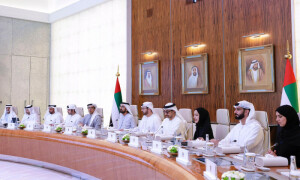ISLAMABAD: Having failed to convince the prime minister and the finance minister to increase kerosene price, the petroleum ministry has decided to introduce the fuel marking programme with the support of oil marketing companies to minimise adulteration of petroleum products.
As a first step, the petroleum ministry and the oil industry have agreed to add “fuel marker” in the locally produced kerosene, which is suspected of being massively used to adulterate other products like petrol and high-octane blending component (HOBC) due to significant price differential between the fuels.
Fuel markers involve different detection methods, including clear and identifiable chemical colours and sophisticated molecular technology using chromatography-mass spectrometry technology and forensic laboratories that can detect fuel adulteration.
However, the process has been called into question by the Hydrocarbon Development Institute of Pakistan (HDIP) — a technical arm of the petroleum ministry — over the issues of transparency and procurement impropriety.
Documents suggest that a meeting, presided over by Petroleum Minister Shahid Khaqan Abbasi and attended by representatives by the oil industry and government organisations, observed that fuel adulteration was a major issue and should be tackled through the fuel marking programme.
To address issues like fuel marker’s nature, estimated volume, procurement, costs and installation of dozing and blending specifications etc, the meeting decided to involve a fuel marking company. The company is to be hired through a transparent manner through competitive bidding and will deal with all refineries, marketing companies and retail set-ups.
The minister constituted a committee, comprising representation from the regulator, all refineries and the HDIP and led by the Oil Companies Advisory Council (OCAC), to finalise standard bidding process and terms of agreement.
The meeting also decided that cost of the marker would be included in the ex-depot price with the approval of the Oil and Gas Regulatory Authority (Ogra).
The HDIP has now put on record that it “was not consulted or taken on board, at any stage of the bidding process, against the stipulation in the minutes and its first involvement began with the opening of single technical bid on June 2, 2017”.
On top of that, the HDIP has also said that reasons for the absence of other technical committee members, including Ogra, had not be recorded or documented.
“Technical role of HDIP must have been defined in the bidding documents,” it said.
The HDIP said that since the bidding process had been completed and the OCAC and the HDIP had already opened the technical bid document under instructions of the directorate of oil, it should be ensured that competitive process was in accordance with the decision of the minister-led committee.
“Moreover, Ogra being member of the technical committee may also be involved in bid evaluation process (both technical and financial) so that the process could be completed,” it added.
An official said that the mixing of kerosene with petrol and HOBC had been a serious issue, causing significant revenue loss to the government and illegitimate earnings to unscrupulous market elements at the cost of consumers.
Kerosene is generally a tax-free product compared to almost 40-50 per cent taxes on other products like petrol, high speed diesel (HSD) and HOBC.
Therefore, kerosene has a negligible revenue impact because of its limited market. In contrast, petrol and HSD are two major products that generate most of oil revenue for the government because of their high taxes, besides their massive and yet growing consumption in the country.
For example, HSD sales across the country are now going beyond 800,000 tonnes per month against monthly consumption of around 600,000 tonnes of petrol. The sales of kerosene and LDO are generally less than 10,000 tonnes per month.
Interestingly, the Ministry of Petroleum and Ogra have been recommending for almost a year a substantial increase in the prices of kerosene and light diesel oil to minimise a huge price differential with petrol.
They argue that a Rs30 per litre price differential between petrol and the two other products is encouraging dishonest market operators to mix kerosene with petrol for higher profits and resulting in adulterated and poor quality petrol being sold in the market instead of higher grade (92RON) for which consumers pay.
The government has been rejecting these calls saying it wants to protect poor people.
Interestingly, kerosene is the only regulated petroleum product but unavailable at fixed rates anywhere in the country while all other products are deregulated and available reasonably within the price band announced by the government.
Published in Dawn, June 22nd, 2017














































